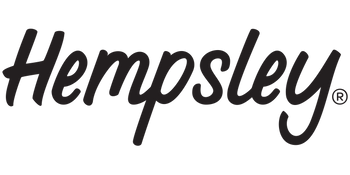Cannabis is a natural plant that has been growing around the world for thousands of years, used for food, textiles, and even medicinally since as early as 2737 B.C. (Time, 2009)

Scientifically speaking, cannabis refers to both hemp and marijuana.
Cannabis, just like many other plants, has a variety of species — each with a slightly different chemical makeup. The terms marijuana and hemp are, essentially, two names that we have assigned to distinguish a particular plant’s cannabinoid profile from another. (Read about the history of the word marijuana on Leafly.com)
Cannabinoids are the compound abundantly found in cannabis that supports our endocannabinoid systems. While there are over 100 different therapeutic cannabinoids found in cannabis, THC is the compound responsible for producing the “high” we hear so much about.

| Recreational States | Medical-Only States | CBD-Only States |
|
|
|
How is "hemp" defined?
Every cannabis plant is likely to have some amount of all cannabinoids, but what distinguishes hemp from marijuana is its level of THC. In order to be defined as hemp by our government, the plant must contain less than .3% THC — making it impossible to get “high” from it (National Conference of State Legislatures, 2017). As a point of reference, marijuana typically contains between 5-10% THC.

While it’s been legal to import hemp products from other countries for years, The Farm Bill (2014) made it legal for states to set up their own hemp cultivation laws in the United States and the Farm Bill of 2018 removed hemp from the list of Schedule 1 drugs. In short, this transferred the authority over hemp from the DEA to the FDA.
Both marijuana and hemp have been used therapeutically
While new research (US News, 2017) is uncovering an array of health benefits of THC, we are also finding that CBD, a completely non-intoxicating cannabinoid found in both hemp and marijuana, has benefits as well.
Since CBD is found in hemp, there are many companies now creating CBD products that have been extracted from hemp grown for medicinal purposes. Shop trusted CBD products here.
While the FDA prohibits these companies from making health claims, there is a growing collection of testimonials from individuals who have experienced the benefits of CBD first-hand, many reporting that it has helped them with chronic pain, anxiety, epilepsy, drug withdrawals, cancer, and more (Medical News Today, 2017). Click here to learn more about how CBD can benefit your body by supporting your endocannabinoid system.
Did you learn something new? Please remember to share it with someone you care about! Download our FREE printable handout here.
This article was written by Kristen Williams and published on July 24, 2017. It was last updated on July 28, 2020. Copyright © 2017 Hempsley, All Rights Reserved





















